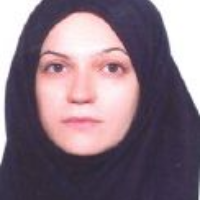The most effective scheme in improving the performance of the WRF model for precipitation over northwest Iran
Evaluation of the performance of the parameterization schemes used in the WRF model is assessed for precipitation over northwest Iran at a 5 km by 5 km grid. Simulations are performed for a winter day. A step-wise decision approach is followed, beginning with seven simulations for the various Cumulus schemes and then four microphysics schemes; after that, 36 different configurations of the model’s PBL, Long-wave, Short-wave, and Land Surface schemes were tested. Root-Mean-Squared-Error chooses the best performing scheme at each step. The concluding scheme set consists of the Lin et al. microphysics scheme, the MYJ PBL scheme, the Dudhia scheme for shortwave, the RRTM for longwave radiation, Eta Similarity option for the Land Surface scheme, and without cumulus scheme. In this study, combinations of schemas that have the most and least effect on the distribution of simulated precipitation data were also identified. For this purpose, 36 configurations are adopted for longwave radiation, shortwave radiation, and boundary layer schemes in 12 groups of three with rotation of shortwave radiation and 12 groups of three with rotation of longwave schema, and in 9 groups of 4 with rotation of the boundary layer scheme was divided, and simulated precipitation variance and sd was calculated for these 33 groups. Thus, among the configurations created, the configurations that have the most and the least effect in estimating the six-hour rainfall and their scattering were identified. The results of the scatter study of each group of precipitation estimated data calculated by variance showed that the change in the choice of the boundary layer scheme when longwave radiation scheme is the RRTM scheme and short wave radiation scheme is the Goddard scheme, can bring the results closer to observation. Changes in the choice of shortwave radiation when longwave radiation is CAM and boundary layer scheme is the MYJ scheme has the least effect on precipitation estimation. This indicates the variability of selecting the most effective schema in precipitation prediction and can be influential in choosing the configuration in ensemble precipitation.
-
A Long-term Study (2000-2014) of Aerosol Impact on Cloud Properties in Two Different Climatic Regions of Western and Southwestern Iran
Reza Ramezani, *, Majid M. Farahani, Nafiseh Pegahfar
Journal of Climate Change Research, -
Aerosol-Cloud-Lightning Interactions: A Comparative Study of Mountainous and Coastal Environments in Iran
Reza Ramezani, *, Majid Mazraeh Farahani, Nafiseh Pegahfar
Journal of the Earth and Space Physics, Winter 2025 -
Using ensemble copula coupling for multivariate post-processing of ensemble prediction
Seyedeh Atefeh Mohammadi, *
Journal of the Earth and Space Physics, -
The Sensitivity Analysis of Whitecapping Dissipation Term for Calibration of SWAN Model Forced with ERA5 Winds in the Gulf of Oman
Amir Siahsarani *, , Behzad Layeghi, Davoud Babazadeh
Nivar,



